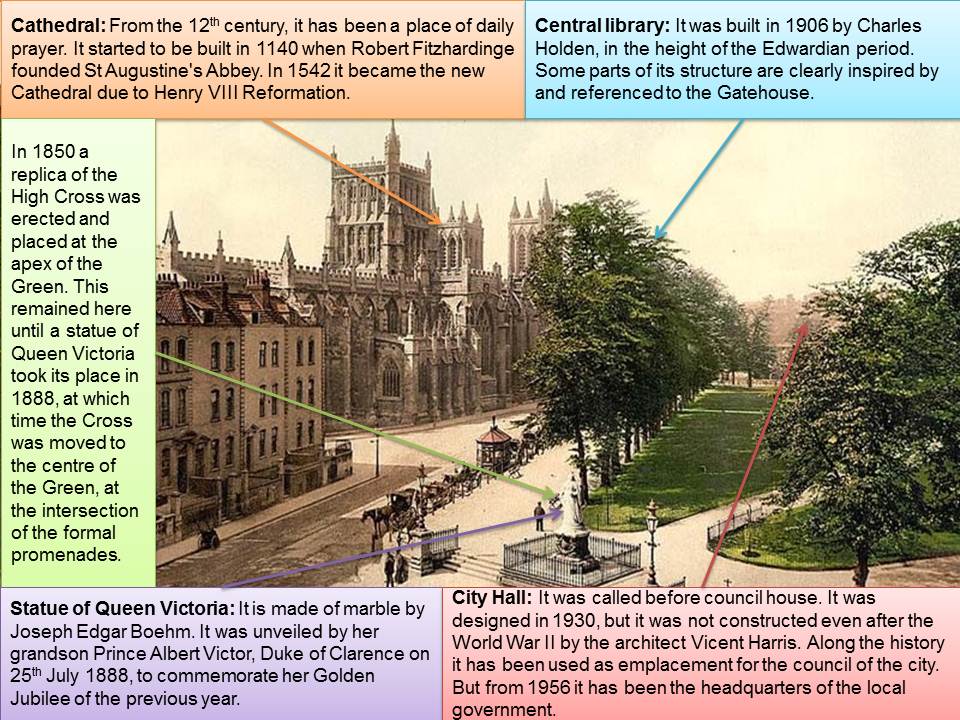BRISTOL (19th century)
The image is a painting of College Green, Bristol. It is taken out of a website related to old photos of Bristol. Although the author is unknown, it is known that the picture was taken at the end of the 19th century, between 1890 and 1900. This city is situated in the South-West of England, at the confluence of the rivers Avon and Frame. Its name comes from «bridgetown», the city of the bridge. However, its evolution has been linked to the harbour of Bristol. In the mid-18th century it became the second most populous city after London; but due to the growth of Liverpool, Manchester and Birmingham at the end of 1780, Bristol lost this position. As for the streets of this city, it is possible to say that they are very varied; we can find a combination of Georgian, Victorian, medieval and contemporary buildings. Another thing to add on this city is its morphology; the centre of Bristol has an irregular plan, whereas the suburbs, where we can differentiate between low class, medium class and high class, have a linear plan. In the centre of the city we can find the central business district, here we can find some shops and offices.
The picture portrays the historical monuments and the social activities during the 19th century. It consists of a representation of an urban view, where we look at College Green, which is a green square in the Centre of the city. It is said that it has been frequently used for entertainments and events including the popular College Green fairs of the 1970s. However, it currently serves as a meeting place for the Bristolian people and tourists. This place is between the Council House (recently renamed City Hall), the Cathedral and a busy road leading to the Centre. Apart from that, the statue of Queen Victoria is also located in College Green, as we can see in the picture, as well as the Bristol Central Library.
As for the Cathedral we can say that the Eastern end of it, especially in the Choir, has a unique place in the development of British and European Architecture. The Nave, Choir and Aisles are all the same height, creating the appearance of a large hall. This Cathedral is a good example of a «Hall Church» in England and one of the best anywhere in the world. We can see that The City Hall is situated opposite to the Cathedral and at the foot of Park Street. The concrete frame is clad with very wide thin bricks with Portland stone dressings and a lead hipped roof in a Neo-Georgian style. The roof is steep and high, with gilded unicorns in the corners of the end blocks. This building was opened by the Queen in 1956.
Nowadays we realize that Bristol was an important harbour city for trading with the South of England. During the 18th century they were leaving from its wharfs boats towards Africa loaded with manufactured products that they were changing for slaves. The decadence of its commercial importance coincided with the paralysis of the relationship with France and with the abolition of slavery. Due to this, Bristol had to look for other sources of development to continue with its economic wealth. It turned into an industrial modern city with an increasing trade based on the aeronautical sector of the world of the mass media and the technological industry. In conclusion, Bristol is a city especially destined for free time and for business.
Belén Ríos López

